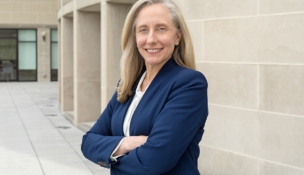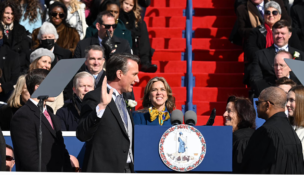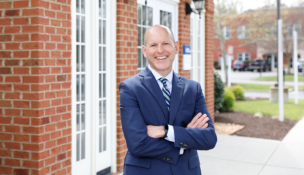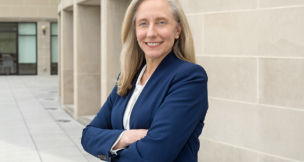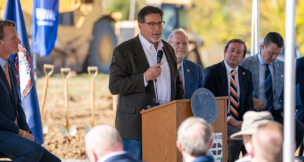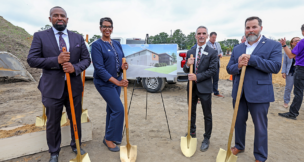Riding the silver tsunami
More Americans are working past 65 than ever before. Is it the new normal or a temporary surge?
Rich Griset //April 29, 2024//

“I believe as long as you’re breathing, you should be able to make some contribution,” says Andrea Samuel, 78, a registered nurse unit coordinator and charge nurse at Sentara CarePlex Hospital in Hampton. Photo by Mark Rhodes

“I believe as long as you’re breathing, you should be able to make some contribution,” says Andrea Samuel, 78, a registered nurse unit coordinator and charge nurse at Sentara CarePlex Hospital in Hampton. Photo by Mark Rhodes
Riding the silver tsunami
More Americans are working past 65 than ever before. Is it the new normal or a temporary surge?
Rich Griset //April 29, 2024//
As a registered nurse unit coordinator and charge nurse at Sentara CarePlex Hospital in Hampton, Andrea Samuel spends her days communicating with doctors and nurses in addition to administering direct bedside care.
A Miami native, Samuel entered nursing school at age 19 and has worked for Sentara since 1991. She celebrated her 78th birthday in March and has no plans to slow down.
“At this stage in my life, this is where I need to be,” says Samuel, who’s been a registered nurse for more than 50 years and earned her bachelor’s degree when she was 73. “I believe as long as you’re breathing, you should be able to make some contribution, and it just so happens that I’m able to work, my health is pretty good, and so I decided to stay where I am for now.”
Samuel isn’t alone in choosing to work later in life. According to a December 2023 report from Pew Research Center, nearly 20% of Americans 65 and older are still in the workforce, nearly twice the percentage of older workers from 35 years ago. And nearly two-thirds of today’s older workers are working full time, compared with nearly half of older workers in 1987.
Healthier and, if they’re still employed, making more money than previous generations when adjusted for inflation, today’s older Americans have various reasons for working later. For some, it’s simply because they enjoy it. For others, concerns over economic disruptions and rising interest rates have made it a necessity.
A record 4.1 million Americans are turning 65 this year, part of a surge expected to continue for the next five years, according to analysis by Jason Fichtner, chief economist at the Bipartisan Policy Center and executive director of the Retirement Income Institute at the Alliance for Lifetime Income. Roughly 11,200 Americans turn 65 each day, according to estimates from the Retirement Income Institute, and the percentage of people 65 and older has doubled from what it was 35 years ago.
This so-called “silver tsunami” is having a major impact on workplaces as companies contend with the eventual retirements of seasoned employees who are often in senior and management positions.
The graying of our country is also playing out in national politics. President Joe Biden will turn 82 two weeks after this November’s presidential election; his GOP opponent, former President Donald Trump, turns 78 this June. According to a February ABC News/Ipsos poll, 86% of Americans think Biden is too old to serve another term as president; 62% feel the same way about Trump.
As our country ages, what does this mean for its workforce?
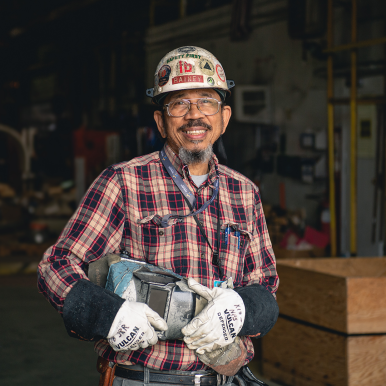
Silver lining
For 52 years, Johnnie R. Rainey has worked as a welder at Newport News Shipbuilding.
“I’ve been blessed,” says the 74-year-old nuclear pipe welder for Huntington Ingalls Industries. “I still need good benefits. It’s a good company, and I just enjoy coming to work every day.”
Rainey says his job at the shipyard allowed him to put his two sons through college, and that he wants to work as long as the quality of his welding holds out. Plus, “if I’m not working, I’ll just have a lot more chores around the house,” he says.
In some ways, Rainey is a throwback to bygone times. Back in 1880, nearly three-quarters of men 65 and older worked. Over time, that share slowly declined, reaching as low as 11% in 1987, according to Richard Fry, a senior researcher at Pew who has studied America’s older workforce. Ever since 1987, the percentage of older Americans in the workforce has been on the rise for several reasons, including fewer employers offering pensions and the fact that some workplaces are intentionally making changes to accommodate older workers.
Demographers say older Americans will make up a large percentage of the workforce for the foreseeable future. Generally, baby boomers had fewer children than their parents did, and boomers’ children have had fewer children than their parents.
Recent labor shortages also are fueling the demand for older Americans to remain in the workforce.
“Employers are facing a dearth of workers,” Fry explains. “The working-age population is not growing very fast. Not as many immigrants are coming in. The fact that more older Americans are working, that is an important contributor now to labor force growth.”
Employment estimates from the U.S. Bureau of Labor Statistics project that 57% of labor force growth between 2022 and 2032 will come from older working Americans.
“You want to have a growing economy?” Fry asks. “You need more workers.”
Hamilton Lombard, a demographer with the University of Virginia’s Weldon Cooper Center for Public Service, says that nearly all of Virginia’s population growth since 2010 has come from its 60 and older population, largely due to birth and death rates and people living longer. During the 2010s, Virginia’s 18 to 59 workforce grew by just 1%, while the share of workers 60 and older rose by 46%.
From 1990 to the present, the share of Virginians in the labor force between ages 65 and 69 rose from 23% to 37%. And between 1990 and 2022, the share of working Virginians in their 80s rose from 2.7% to 4.6%.
“There’s basically no growth happening in the workforce unless you’re talking about people over 60,” Lombard says. “A lot of it is people who are retiring later than they have in the past, which is helping keep the labor force going.”
Other factors also are leading today’s Americans to work longer than previous generations. Jobs have become less physically demanding, contributing to longevity, and remote work has made it easier for older workers to keep punching the virtual clock. Not only are they healthier than prior cohorts of older workers, but they’re better educated, meaning more of them occupy white collar jobs that allow them to work longer.
The changing nature of retirement plans is also a factor. The pensions of yesterday have given way to 401(k)s, individual retirement accounts and other retirement plans without mandatory retirement dates. Changes to Social Security in the 1980s effectively moved the retirement age for full benefits from 65 to 67. And a 2022 survey by Retirement Living found that nearly 70% of boomers were worried that they wouldn’t have enough savings to be able to retire, leading them to work longer. Participants in the survey reported having an average of $680,000 in retirement savings, far from the $1.2 million they said they would need to feel secure for retirement.
These converging trends may also be setting the stage for greater societal pressures. According to U.Va., the average American will be 38.6 years old in 2049, meaning that nearly half of the country will be in their 40s or older. This could pose a problem because when older people drop out of the workforce, it adds pressure on pensions, health care systems and entitlement programs like Social Security, Medicare and Medicaid.
As the share of the population over the age of 65 won’t decline anytime soon, Lombard says, these challenges are here to stay, given that many boomers may live another 30 years. (The population of Americans over age 100 is expected to more than quadruple by 2054, growing from 101,000 now to about 422,000, according to U.S. Census Bureau projections.) This is why Lombard takes issue with the term “silver tsunami.”
“It’s accurate in the sense that it’s a huge wave hitting us,” he says, but adds it might be more fitting to think of it “like a glacier. It’s coming and it’s not going to go away. It’s going to be permanently different, because we’re going to have a much larger share of population over 65 than we do now.”
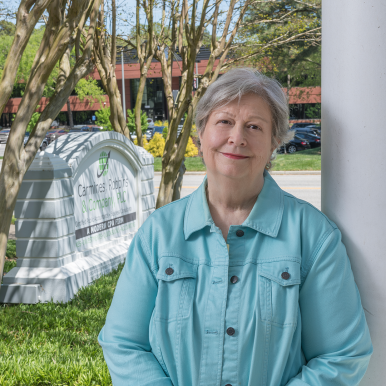
‘Unretiring‘
Jean Moses retired once before. She didn’t like it.
“I stayed at home for four months and was bored,” says the 76-year-old director of estates and trusts at Newport News-based accounting firm Carmines, Robbins & Co. “The only thing that came out of my staying home that four months was the knowledge that our 2,600-square-foot house was not big enough for my husband and I to be [together] 24/7.”
After that brief flirtation with retirement in 2014, Moses returned to a workforce that desperately needed her.
Because becoming a CPA requires coursework beyond a bachelor’s degree and passing a difficult exam, and historically has not paid as well as jobs in tech and finance, fewer young people have been entering the profession in recent decades. The American Institute of Certified Public Accountants reported in April 2023 that 75% of working CPAs were expected to retire in the next 15 years. Meanwhile, between 2010 and 2021, the number of CPA exam candidates dropped by 36%. Moses says it’s common for “retired” CPAs to work during tax season.
“There’s a tremendous drain rate in the public accounting industry,” Moses says. “Staff are extremely short, so there’s lots of older people.”
While the accounting industry’s labor shortage is particularly acute, it points to a larger trend. An estimated 56% of retiring baby boomers hold leadership positions. When they retire, that’s a lot of knowledge walking out the door.
With most having worked for at least 39 years, older workers have been called the backbone of the U.S. labor force; many quit their jobs only three times on average over the course of their careers. Compare that with millennials, who have an average tenure of 3.2 years at each job.
According to a March report from T. Rowe Price, the pandemic led to 2.4 million excess retirements in 2020, but by March 2022, about 1.5 million retirees had re-entered the workforce. Roughly half of these “unretired” workers reported feeling the financial need to return, while 45% said they chose to work because of social and emotional benefits.
By 2030, most boomers will have left the workforce, and there is concern whether younger generations will be ready to take over those jobs. A report by management consulting firm Korn Ferry forecasts that by 2030, more than 85 million jobs will go unfilled because there won’t be enough skilled people to take them, a talent shortage that could mean $8.5 trillion in unrealized revenues annually.
Carly Roszkowski, vice president of financial resilience programming at AARP, says it’s important for employers to consider ways to encourage mentorship, transfer knowledge and plan for succession at their companies.
Becky Sawyer, executive vice president and chief people officer for Norfolk-based Sentara Health, says that the health care provider has been examining these issues for some time.
“We’ve put into place mentoring programs,” she says. “We’ve created opportunities for senior colleagues to cultivate younger talent. We’re doing lots of talent calibration that allows us to identify people who are in early career tracks to put them through leadership development.”
Sentara recognizes the value of its older workers, Sawyer says. When the pandemic hit, the health care corporation reached out to all of its retirees to see if they would return to the workplace. Many did.
“Older workers are highly productive,” Sawyer says. “They’ve got valuable perspectives, problem-solving skills, institutional knowledge and skills and abilities that our newer workers … don’t always have.”

No expiration date
At 81, William G. “Bill” Crutchfield Jr., founder and CEO of Charlottesville-based electronics retailer Crutchfield Corp., regularly works eight to nine hours each weekday and several hours on weekends.
“Retiring at a fixed age like 65 is a terrible myth,” Crutchfield says. “I will continue to work as long as my physical and cognitive health remains strong, and as long as I am making positive contributions to my company. There are huge benefits of older employees remaining active in their professions. We have far more institutional knowledge about our organizations than younger employees.”
Instead of retirement, Crutchfield’s company tries to move older employees to part-time schedules to give them flexibility while still being able to access their expertise and labor.
“We encourage folks to stay and work as long as they can,” says Chris Lilley, Crutchfield’s chief human resource officer. “In our IT department, that’s really the place where the brain drain hits the hardest. We try to make sure that we’re promoting a ton of succession, and we’re moving people through the ranks and giving them opportunities.”
The company recently brought back three former copywriters to work part time after an employee went out on emergency leave. Two of the three returning workers are in their 60s.
“When we have an opportunity and we have work for [older workers] to do, we’ll take them back,” Lilley says.
Flexibility in the workplace, such as allowing older employees to transition to part-time work, is one way employers can keep older workers engaged. Career breaks and sabbaticals can also help prolong careers.
Erika Payne, senior employment program manager for Central Virginia nonprofit Senior Connections, says she constantly fields calls from employers seeking older workers. Often these employers are adult day centers, assisted living facilities, child care facilities and medical facilities that need drivers to deliver prescriptions.
On occasion, Payne has run into age discrimination from employers, mentioning one particular grocery chain that seems to ignore résumés submitted from older workers.
“There are simple things that we can do in the workforce to encourage older workers to stay in the workforce,” Payne says. “If we change our mindset, offer some small tweaks or accommodations, [we can] bring those individuals that are wanting work into the job market.”
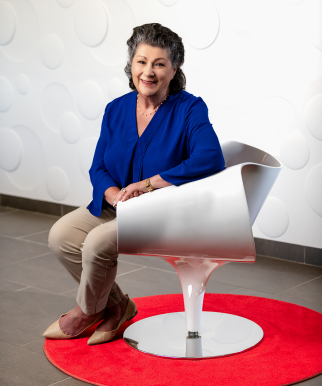
For Chesterfield County resident Carolyn Clements, the realization she needed to return to the workforce came to her while vacuuming her attic.
In 2012, after decades of working in banking and finance, including for SunTrust, Bank of America and NationsBank, Clements decided to retire. A few months into her retirement, while vacuuming, she received a call from Melissa Ball, owner of Ball Office Products in Henrico County. Clements’ attic cleaning served as evidence that she had run out of things to do.
“[Ball] said, ‘Carolyn, people don’t vacuum their attic,’” Clements recalls. “My comment was, ‘That may be the reason why I was having such a hard time finding a place to plug that thing in.’”
The following January, Clements started a management job at Ball; now she’s the company’s part-time business development manager.
Clements wants to work as long as possible.
“I don’t have an expiration date. I’ve looked on my wrists. I’ve looked on my ankles. I went to my dermatologist and had her check me out,” says the 71-year-old. “As long as I can continue to learn, and as long as my mind is sound and my body is functioning, I want to keep working.
“I feel like I’m giving back now, and that’s a really good feeling.”
T

